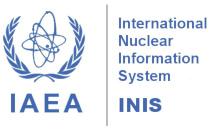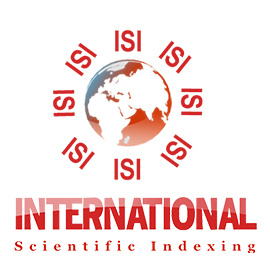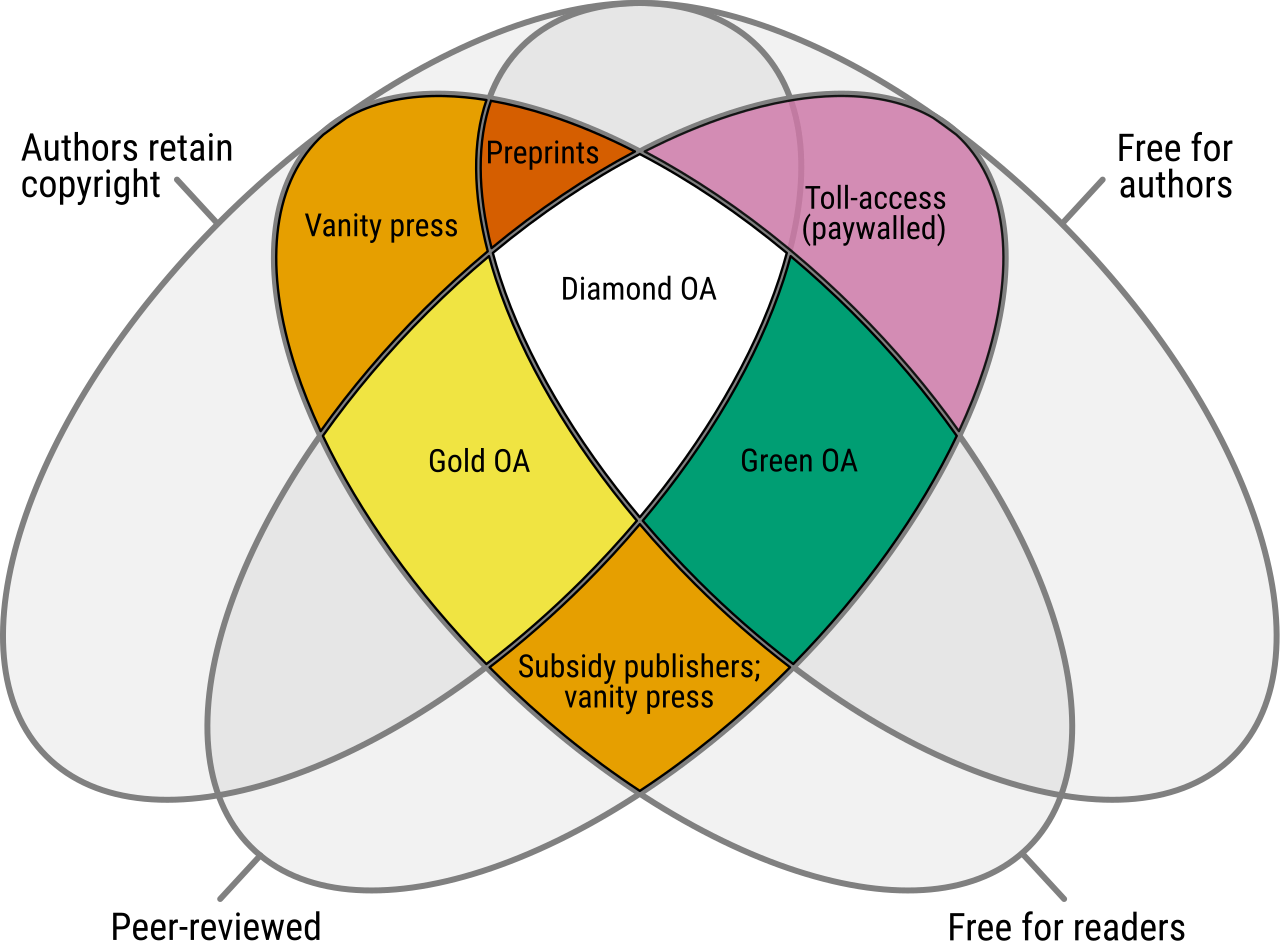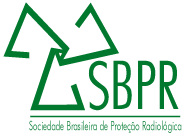Dose-effect calibration curve for high X-ray doses using the Calyculin-A chromosome premature condensation assay
DOI:
https://doi.org/10.15392/2319-0612.2024.2422Palavras-chave:
biodosimetry, Calyculin-A, cytogenetic aberrations, radiation biology, radiation protectionResumo
Purpose: This article shows the results of the Cytogenetics Laboratory of the Health Research Institute (INISA) to develop a dose-effect calibration curve with the Calyculin-A chemical induction premature condensation assay to estimate high doses of X-ray exposure. Methods: to create the calibration curve, peripheral blood samples from two participants (one female and one male) were exposed to X-rays at six different dose points ranging from 0 to 17.5 Gy in vitro. The irradiated blood was cultured for 48 hours according to international protocols, and the resulting chromosome rings were recorded. We used BioDoseTools software to calculate the coefficients for the calibration curve. Results: The coefficients of the curve are α: 0.028±0.001 and C: 0.001±0.001. These coefficients have similar values to those reported internationally. The curve was validated by calculating an unknown dose exposed to 6 Gy; the estimated dose was 5.651 ± 0.636 Gy, with no statistically significant differences between the dose delivered and the estimated dose. Conclusions: The INISA Biological Dosimetry Service can use the curve obtained to assess absorbed doses in cases of suspected overexposure to high X-ray doses.
Downloads
Referências
GARCÍA, O. ET AL., “The BioDoseNet image repository used as a training tool for the dicentric assay”, Int J Radiat Biol, vol. 95, no 12, p. 1659–1667, 2019, doi: https://doi.org/10.1080/09553002.2019.1665211.
GOTOH, E., “G2 Premature Chromosome Condensation/Chromosome Aberration Assay: Drug-Induced Premature Chromosome Condensation (PCC) Protocols and Cytogenetic Approaches in Mitotic Chromosome and Interphase Chromatin for Radiation Biology”, 2019, p. 47–60. doi: 10.1007/978-1-4939-9432-8_6. DOI: https://doi.org/10.1007/978-1-4939-9432-8_6
NAIRY, R. K. ET AL., “Standardization of CalyculinA induced PCC assay and its advantages over Okadaic acid PCC assay in Biodosimetry applications”, J Occup Health, vol. 58, no 6, p. 563–569, nov. 2016, doi: 10.1539/joh.16-0049-OA. DOI: https://doi.org/10.1539/joh.16-0049-OA
GUERRERO-CARBAJAL, C., I. ROMERO-AGUILERA, C. ARCEO-MALDONADO, J. E. GONZALEZ-MESA, G. E. CORTINA-RAMIREZ, e O. GARCIA-LIMA, “Dose response of prematurely condensed chromosome rings after gamma irradiation”, Int J Radiat Biol, vol. 95, no 5, p. 607–610, maio 2019, doi: 10.1080/09553002.2019.1566677. DOI: https://doi.org/10.1080/09553002.2019.1566677
INTERNATIONAL ATOMIC ENERGY AGENCY, “Cytogenetic Dosimetry: Applications in Preparedness for and Response to Radiation Emergencies”, Vienna, 2011. [Online]. Disponível em: http://www-ns.iaea.org/standards/
HATZI, V. I., G. I. TERZOUDI, C. PARASKEVOPOULOU, V. MAKROPOULOS, D. P. MATTHOPOULOS, e G. E. PANTELIAS, “The use of premature chromosome condensation to study the influence of environmental factors on human genetic material in interphase cells”, ScientificWorldJournal, vol. 6, p. 1174–1190, 2006, doi: 10.1100/tsw.2006.210. DOI: https://doi.org/10.1100/tsw.2006.210
CORNFORTH, M. N., S. BEDFORD, e S. M. BAILEY, “Destabilizing Effects of Ionizing Radiation on Chromosomes : Sizing up the Damage”, p. 328–351, 2021, doi: 10.1159/000516523. DOI: https://doi.org/10.1159/000516523
SISHC, B. J., C. B. NELSON, M. J. MCKENNA, C. L. R. BATTAGLIA, e C. TANZARELLA, “Telomeres and Telomerase in the radiation response : implications for instability , reprograming , and carcinogenesis”, Front Oncol, vol. 5, p. 1–19, 2015, doi: 10.3389/fonc.2015.00257. DOI: https://doi.org/10.3389/fonc.2015.00257
MURNANE, J. P., “Telomere dysfunction and chromosome instability”, Mutat Res., vol. 730, no 415, p. 28–36, 2013, doi: 10.1016/j.mrfmmm.2011.04.008.Telomere. DOI: https://doi.org/10.1016/j.mrfmmm.2011.04.008
XIAO, C., N. HE, Y. LIU, Y. WANG, e Q. LIU, “Research progress on biodosimeters of ionizing radiation damage”, Radiat Med Prot, vol. 1, no 3, p. 127–132, set. 2020, doi: 10.1016/j.radmp.2020.06.002. DOI: https://doi.org/10.1016/j.radmp.2020.06.002
INTERNATIONAL ATOMIC ENERGY AGENCY, “Dosimetry of Small Static Fields Used in External Beam Radiotherapy An International Code of Practice for Reference and Relative Dose Determination”, Vienna, 2017.
DIETERICH, S. ET AL., “Report of AAPM TG 135: Quality assurance for robotic radiosurgery”, Med Phys, vol. 38, no 6Part1, p. 2914–2936, maio 2011, doi: 10.1118/1.3579139. DOI: https://doi.org/10.1118/1.3579139
MISZCZYK, J., “Investigation of dna damage and cell-cycle distribution in human peripheral blood lymphocytes under exposure to high doses of proton radiotherapy”, Biology (Basel), vol. 10, no 2, p. 1–16, 2021, doi: 10.3390/biology10020111. DOI: https://doi.org/10.3390/biology10020111
RADL, A., M. TAJA, C. SAPIENZA, R. BUBNIAK, M. DEMINGE, e M. GIORGIO, “Biodosimetría para sobreexposiciones con altas dosis , utilizando condensación prematura de cromosomas ( PCC ) químicamente inducida”, em IX Congreso Regional de Seguridad Radiológica y Nuclear, 2013.
HERNÁNDEZ, A. ET AL., “Biodose Tools: an R shiny application for biological dosimetry”, Int J Radiat Biol, vol. 99, no 9, p. 1378–1390, set. 2023, doi: 10.1080/09553002.2023.2176564. DOI: https://doi.org/10.1080/09553002.2023.2176564
GARCÍA, O. ET AL., “The BioDoseNet image repository used as a training tool for the dicentric assay”, Int J Radiat Biol, vol. 95, no 12, p. 1659–1667, dez. 2019, doi: 10.1080/09553002.2019.1665211. DOI: https://doi.org/10.1080/09553002.2019.1665211
GARCIA, O. F. ET AL., “Intercomparison in cytogenetic dosimetry among five laboratories from Latin America”, Mutation Research/Fundamental and Molecular Mechanisms of Mutagenesis, vol. 327, no 1–2, p. 33–39, mar. 1995, doi: 10.1016/0027-5107(94)00066-E. DOI: https://doi.org/10.1016/0027-5107(94)00066-E
LLOYD, D. C. ET AL., “A collaborative exercise on cytogenic dosimetry for simulated whole and partial body accidental irradiation”, Mutation Research/Fundamental and Molecular Mechanisms of Mutagenesis, vol. 179, no 2, p. 197–208, ago. 1987, doi: 10.1016/0027-5107(87)90310-1. DOI: https://doi.org/10.1016/0027-5107(87)90310-1
MIURA, T. e W. F. BLAKELY, “Optimization of calyculin A-induced premature chromosome condensation assay for chromosome aberration studies”, Cytometry Part A, vol. 79A, no 12, p. 1016–1022, dez. 2011, doi: 10.1002/cyto.a.21154. DOI: https://doi.org/10.1002/cyto.a.21154
INTERNATIONAL COMMISSION ON RADIOLOGICAL PROTECTION, “The 2007 Recommendations of the International Commission on Radiological Protection”, 2007.
ROY, L. ET AL., “International intercomparison for criticality dosimetry: the case of biological dosimetry”, Radiat Prot Dosimetry, vol. 110, no 1–4, p. 471–476, ago. 2004, doi: 10.1093/rpd/nch349. DOI: https://doi.org/10.1093/rpd/nch349
MEENAKSHI, C., P. VENKATACHALAM, S. CHANDRASEKARAN, e B. VENKATRAMAN, “Construction of dose response curve for 6 MV LINAC X-rays using Premature Chromosome Condensation assay for radiation dosimetry”, Applied Radiation and Isotopes, vol. 173, p. 109729, jul. 2021, doi: 10.1016/j.apradiso.2021.109729. DOI: https://doi.org/10.1016/j.apradiso.2021.109729
LAMADRID, A., O. GARCÍA, M. DELBOS, P. VOISIN, e L. ROY, “PCC-ring induction in human lymphocytes exposed to gamma and neutron irradiation”, J Radiat Res, vol. 48, no 1, p. 1–6, 2007, doi: 10.1269/jrr.0625. DOI: https://doi.org/10.1269/jrr.0625
PUIG, R., L. BARRIOS, M. PUJOL, M. R. CABALLÍN, e J.-F. BARQUINERO, “Suitability of scoring PCC rings and fragments for dose assessment after high-dose exposures to ionizing radiation”, Mutation Research/Genetic Toxicology and Environmental Mutagenesis, vol. 757, no 1, p. 1–7, set. 2013, doi: 10.1016/j.mrgentox.2013.03.013. DOI: https://doi.org/10.1016/j.mrgentox.2013.03.013
ROMERO, I. ET AL., “Assessment of simulated high-dose partial-body irradiation by PCC-R assay”, J Radiat Res, vol. 54, no 5, p. 863–871, set. 2013, doi: 10.1093/jrr/rrt032. DOI: https://doi.org/10.1093/jrr/rrt032
ROMERO, I., A. I. LAMADRID, J. E. GONZÁLEZ, T. MANDINA, e O. GARCÍA, “Culture time and reagent minimization in the chemical PCC assay”, Int J Radiat Biol, vol. 92, no 10, p. 558–562, 2016, doi: 10.1080/09553002.2016.1206236. DOI: https://doi.org/10.1080/09553002.2016.1206236
SUN, M., J. MOQUET, S. BARNARD, D. LLOYD, e E. AINSBURY, “A Simplified Calyculin A-Induced Premature Chromosome Condensation (PCC) Protocol for the Biodosimetric Analysis of High-Dose Exposure to Gamma Radiation”, Radiat Res, vol. 193, no 6, p. 560, mar. 2020, doi: 10.1667/RR15538.1. DOI: https://doi.org/10.1667/RR15538.1
BALAKRISHNAN, S., KAPIL SHIRSATH, N. BHAT, e K. ANJARIA, “Biodosimetry for high dose accidental exposures by drug induced premature chromosome condensation (PCC) assay”, Mutation Research/Genetic Toxicology and Environmental Mutagenesis, vol. 699, no 1–2, p. 11–16, jun. 2010, doi: 10.1016/j.mrgentox.2010.03.008. DOI: https://doi.org/10.1016/j.mrgentox.2010.03.008
LINDHOLM, C. ET AL., “Premature Chromosome Condensation (PCC) Assay for Dose Assessment in Mass Casualty Accidents”, Radiat Res, vol. 173, no 1, p. 71–78, jan. 2010, doi: 10.1667/RR1843.1. DOI: https://doi.org/10.1667/RR1843.1
LAMADRID, A. I., J. E. GONZÁLEZ, O. GARCÍA, P. VOISIN, e L. ROY, “Prematurely Condensed Chromosome Rings after Neutron Irradiation of Human Lymphocytes”, J Radiat Res, vol. 52, no 4, p. 531–535, 2011, doi: 10.1269/jrr.10096. DOI: https://doi.org/10.1269/jrr.10096
PUIG, R., M. PUJOL, L. BARRIOS, M. R. CABALLÍN, e J.-F. BARQUINERO, “Analysis of α-particle-induced chromosomal aberrations by chemically-induced PCC. Elaboration of dose-effect curves”, Int J Radiat Biol, vol. 92, no 9, p. 493–501, set. 2016, doi: 10.1080/09553002.2016.1206238. DOI: https://doi.org/10.1080/09553002.2016.1206238
Downloads
Publicado
Edição
Seção
Licença
Direitos autorais (c) 2024 Brazilian Journal of Radiation Sciences

Este trabalho está licenciado sob uma licença Creative Commons Attribution 4.0 International License.
Declaro que o presente artigo é original, não tendo sido submetido à publicação em qualquer outro periódico nacional ou internacional, quer seja em parte ou em sua totalidade. Declaro, ainda, que uma vez publicado na revista Brazilian Journal of Radiation Sciences, editada pela Sociedade Brasileira de Proteção Radiológica, o mesmo jamais será submetido por mim ou por qualquer um dos demais co-autores a qualquer outro periódico. Através deste instrumento, em meu nome e em nome dos demais co-autores, porventura existentes, cedo os direitos autorais do referido artigo à Sociedade Brasileira de Proteção Radiológica, que está autorizada a publicá-lo em meio impresso, digital, ou outro existente, sem retribuição financeira para os autores.
Licença
Os artigos do BJRS são licenciados sob uma Creative Commons Atribuição 4.0 Licença Internacional, que permite o uso, compartilhamento, adaptação, distribuição e reprodução em qualquer meio ou formato, desde que você dê o devido crédito ao (s) autor (es) original (is) e à fonte, forneça um link para a licença Creative Commons, e indique se mudanças foram feitas. As imagens ou outro material de terceiros neste artigo estão incluídos na licença Creative Commons do artigo, a menos que indicado de outra forma em uma linha de crédito para o material. Se o material não estiver incluído no licença Creative Commons do artigo e seu uso pretendido não é permitido por regulamentação legal ou excede o uso permitido, você precisará obter permissão diretamente do detentor dos direitos autorais. Para visualizar uma cópia desta licença, visite http://creativecommons.org/licenses/by/4.0/






















